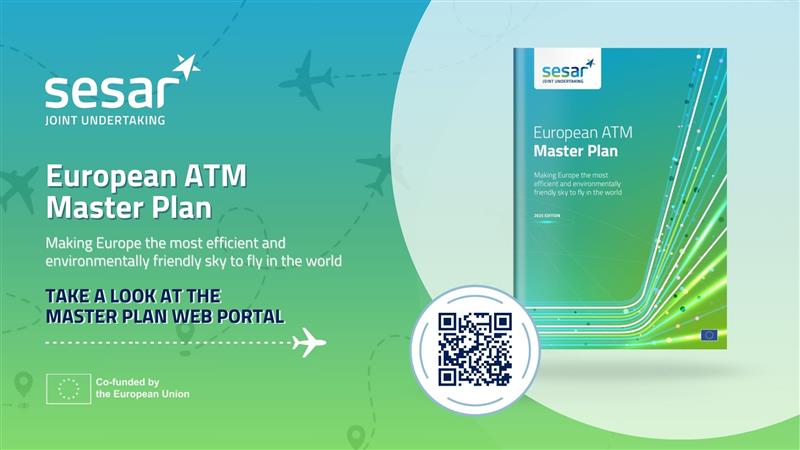
The SESAR 3 JU brings together the EU, Eurocontrol, and more than 50 organisations covering the entire aviation value chain, from airports, airspace users, air navigation service providers, drone operators and service providers, the manufacturing industry and the scientific community. The partnership also works closely with the regulatory and standardisation bodies, notably EASA and EUROCAE, as well as key stakeholders such as professional staff organisations, the space and military communities and global partners. Find out more about the SESAR JU
About the European ATM Master Plan 2025
Air traffic management (ATM) is at a crossroads. As a shared and interconnected infrastructure, ATM is under pressure to adapt better to fluctuating traffic, staff shortages and a rapidly evolving security context. At the same time, climate change is adding to the urgency for ATM to accelerate its transition to cleaner, more sustainable operations. Against this pressing backdrop, the SESAR Joint Undertaking has today released the European ATM Master Plan 2025, the roadmap for modernising air traffic management and making Europe the most efficient and environmentally friendly sky to fly in the world by 2045.
Highlights from the 2025 edition include:
- The twin digital and green transitions are the central focus of the plan, which is structured around five technological levers for transformational change: trajectory-based operations, greater data volumes through better air–ground and ground–ground communication, higher levels of automation between the flight deck and the ground, human-machine teaming, and dynamic airspace.
- Until now, the ATM service delivery model has typically evolved every 10 to 20 years through major upgrades to the core ATM system. A new data-driven and cloud-based service-oriented architecture (SOA) delivery model will shift the focus from assets to services, enabling the quicker deployment of new features and improving interoperability across air navigation service providers and other stakeholders.
- Ten strategic deployment objectives (SDOs) address safety-critical features such as runway/taxiway incursions (SDO 1), environmental benefits for airports (SDO 2) and for all flights thanks to trajectory-based operations (SDO 5), improvements of capacity and scalability (SDOs 3, 4, 6 and 8) as well as the uptake of innovative air mobility (SDO 10). The transversal objectives related to air–ground connectivity (SDO 7) and to communication, navigation and surveillance (SDO 9) complete the selection.
- The final phase of the Digital European Sky is defined for the first time, by detailing 12 development priorities to address the following challenges: the vision of making Europe the most efficient and environmentally friendly sky to fly in the world; the further integration of innovative air mobility; the emergence of higher airspace operations; the integration of the next generation of aircraft for zero-/low-emission aviation by 2035; the new security context for ATM in Europe.
- It is estimated that every euro invested in deploying SESAR solutions will generate a return on investment of EUR 17 by 2050. Factoring in broader socioeconomic benefits, this figure rises to an impressive EUR 53 per euro invested by 2050.
- In terms of sustainability, implementing the plan could save up to 400 million tonnes of CO2 by 2050—equivalent to nearly three years of Europe’s total aviation emissions. Milestones include a reduction of 100 million tonnes by 2035 and 200 million tonnes by 2040, highlighting the plan’s critical role in aviation’s green transition.
Download the PDF file for Masterplan and Related Documents from the link
